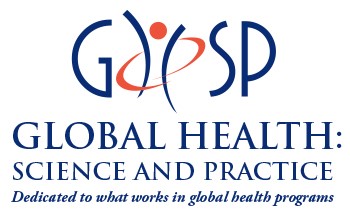Latest Articles
- Women's growing desire to limit births in sub-Saharan Africa: meeting the challenge
Contrary to conventional wisdom, many sub-Saharan African women—often at young ages—have an unmet need for family planning to limit future births, and many current limiters do not use the most effective contraceptive methods. Family planning programs must improve access to a wide range of modern contraceptive methods and address attitudinal and knowledge barriers if they are to meet women's needs.
- Effectiveness of a community-based positive prevention intervention for people living with HIV who are not receiving antiretroviral treatment: a prospective cohort study
In Mombasa, Kenya, a community-based HIV risk-reduction intervention effectively reached people living with HIV who were not receiving antiretroviral treatment (ART)—a difficult-to-reach population because they often fall outside the ambit of health care services—and succeeded in reducing reported risky sex behavior and increasing ART uptake.
- Successful polio eradication in Uttar Pradesh, India: the pivotal contribution of the Social Mobilization Network, an NGO/UNICEF collaboration
Innovative approaches to eradicate polio in hard-to-reach areas included: (1) cadres of trusted community mobilizers who track children's immunization status, (2) responsiveness to people's concerns about immunization, (3) outreach to religious and other local leaders, (4) focus on both individual- and community-level behavioral approaches, and (5) continuous data collection and use.
- Contraceptive implants: providing better choice to meet growing family planning demand
Contraceptive implants are extremely effective, long acting, and suitable for nearly all women—to delay, space, or limit pregnancies—and they are increasingly popular. Now, markedly reduced prices and innovative service delivery models using dedicated non-physician service providers offer a historic opportunity to help satisfy women's growing need for family planning.
- Open-source collaboration for Global Health: Science and Practice
USAID and the Schools of Public Health at JHU and GWU welcome you to the inaugural issue of GHSP—an open-access, peer-reviewed journal for the global health community, particularly program implementers, to contribute to and benefit from a dialogue based on science and practical programmatic experience.
- GeneXpert for TB diagnosis: planned and purposeful implementation
Xpert MTB/RIF is a major advance for TB diagnostics, especially for multidrug-resistant (MDR) TB and HIV-associated TB. But implementation concerns including cost, technical support requirements, and challenging demands of providing second-line TB drugs for diagnosed MDR-TB cases call for gradual, careful introduction based on country circumstances.
- Lessons learned from scaling up a community-based health program in the Upper East Region of northern Ghana
The original CHPS model deployed nurses to the community and engaged local leaders, reducing child mortality and fertility substantially. Key scaling-up lessons: (1) place nurses in home districts but not home villages, (2) adapt uniquely to each district, (3) mobilize local resources, (4) develop a shared project vision, and (5) conduct “exchanges” so that staff who are initiating operations can observe the model working in another setting, pilot the approach locally, and expand based on lessons learned.
- Can we stop AIDS with antiretroviral-based treatment as prevention?
Challenges to scaling up treatment as prevention (TasP) of HIV transmission are considerable in the developing-world context and include accessing at-risk populations, human resource shortages, adherence and retention in care, access to newer treatments, measurement of treatment effects, and long-term sustainable funding. Optimism about ending AIDS needs to be tempered by the realities of the logistic challenges of strengthening health systems in countries most affected and by balancing TasP with overall combination prevention approaches.
- Global health diplomacy: advancing foreign policy and global health interests
Attention to global health diplomacy has been rising but the future holds challenges, including a difficult budgetary environment. Going forward, both global health and foreign policy practitioners would benefit from working more closely together to achieve greater mutual understanding and to advance respective mutual goals.

